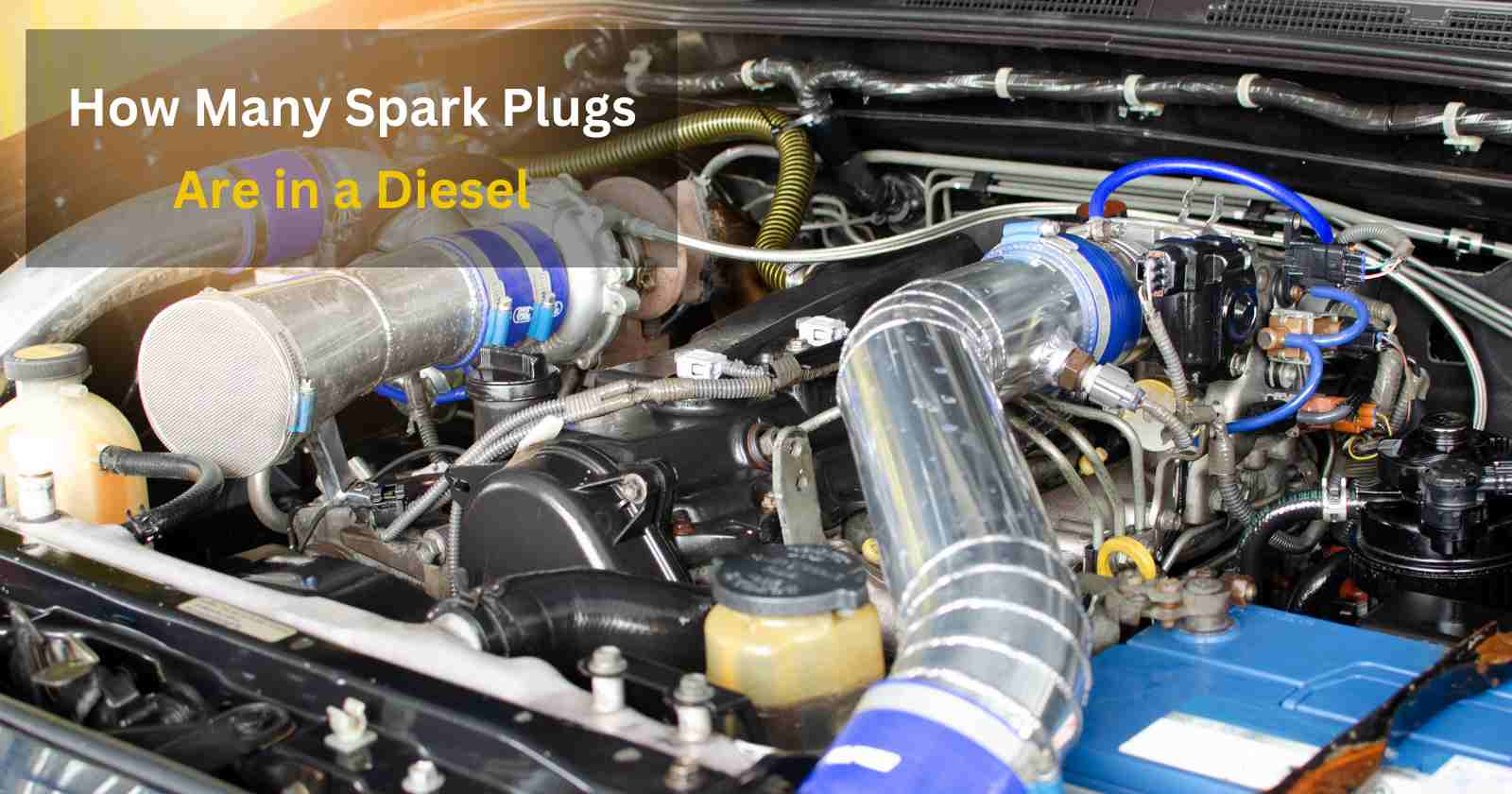How Many Spark Plugs Are in a Diesel? The Simple Answer
If you’re new to the world of cars–or if you typically drive a gasoline vehicle–you may be wondering about the differences between gasoline and diesel engines. One key difference involves spark plugs. So, how many spark plugs are in a diesel engine?

Diesel Engines Don’t Have Spark Plugs
The simple answer is none. Diesel engines don’t utilize spark plugs at all. Instead, they operate using a unique process called compression ignition. Let’s break down how this works.
Gasoline vs. Diesel: Understanding the Ignition Process
- Gasoline Engines: Gasoline (or petrol) engines need spark plugs to ignite the air-fuel mixture within the combustion chamber. The spark plug produces a timed, electrical spark that sets off the combustion process, ultimately creating the power to move the vehicle.
- Diesel Engines: Diesel engines don’t need this external spark. They rely on something called compression ignition. Air inside the cylinder is compressed to extremely high pressures, causing it to heat up drastically. At the precise moment, diesel fuel is injected into this superheated air and ignites spontaneously due to the intense heat. The resulting combustion forces the piston down, generating power.
Glow Plugs: The Diesel Engine’s Helper
While diesel engines don’t have spark plugs, they do have components called glow plugs. Glow plugs serve the purpose of preheating the combustion chamber. This is particularly helpful for cold starts, ensuring the air within the chamber is hot enough for reliable ignition of the diesel fuel.
Key Takeaways
- No Spark Plugs: Diesel engines do not require spark plugs for operation.
- Compression Ignition: Diesel engines use high compression to heat the air within the cylinder, achieving combustion when fuel is injected.
- Glow Plugs: These components assist in starting diesel engines, especially in colder climates.
How do glow plugs work in a diesel engine
Glow Plugs: How They Help Diesel Engines Start in the Cold!
Diesel engines are great for power and saving fuel. But unlike gas engines, they don’t use spark plugs to start up. So, what’s their secret for starting in chilly weather? Meet the tiny heroes – glow plugs!
Small Heaters with a Big Job:
Picture trying to light a fire on a cold night. A small spark might work when it’s warmer, but when the wood is damp, it needs more help. Glow plugs are like that for diesel engines. When it’s cold outside, the air in the engine is too chilly for the diesel fuel to catch fire just by squeezing it. That’s where these little heaters come in.
Warming Up for Better Performance:
Think of glow plugs as small spark plugs without the spark. Before you turn the key, they get a jolt of electricity, heating up like tiny coils to about 800°C (that’s really hot!). This makes a cozy spot for the diesel fuel that’s about to come in, making sure it catches fire easily when it’s sprayed into the cylinder.
Different Types for Different Needs:
There are two main kinds of glow plugs:
- Ceramic glow plugs: These warm up fast but might not last as long.
- Metal glow plugs: They take more time to warm up but are tougher.
Modern engines often use fancy glow plug systems with different heating stages to work better and pollute less.
More Than Just Cold Starts:
Glow plugs don’t just help start-up in the cold. They also give these benefits:
- Less wear and tear on the engine: By starting smoothly, they keep the engine parts from getting too stressed.
- Cleaner exhaust: Burning well means fewer bad gases coming out.
- Quicker engine warm-up: This saves fuel and makes the engine quieter.
These small wonders might not get much attention, but glow plugs are super important for diesel engines to work well. So, next time you hear a diesel engine start up on a cold morning, think about the unsung heroes – the glow plugs, quietly making sure everything stays warm and ready
Read also





